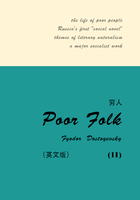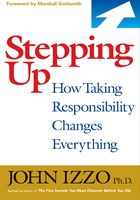The war in the Far East was well into its fifth year when Pearl Harbor was attacked by Japanese aircraft on the morning of 7th December 1941. Moreover, this act, although it came as a tremendous shock to most of the world, was in its way merely another extension, albeit a large one, of a conflict which had been steadily widened in scope since the beginning of that war. Indeed, in view of the events which had preceded this attack it is clear that the destruction of the US Pacific battlefleet was nothing more than the logical military consequence of a far larger struggle, which had become deadlocked in the hills and river valleys of China. The Pacific war, as we westerners fondly like to think of it, was a side-effect of Japan's China war, which began in July 1937.
The origins of this struggle are to be found back in the 19th Century, in the period after the Meiji restoration of 1868, when Japan transformed herself from being a feudal state into a highly industrialised and modernised one. Having imitated the advanced western nations so far, it was not surprising that the Japanese should wish to go further and obtain overseas possessions, just as the imperialist powers had done. Here, however, the difficulty arose, for the latter were not prepared to see a yellow-skinned people enter their rather exclusive club and share the privileges which they were hoping to secure for themselves in Asia. In 1894/95 Japan fought and defeated a weaker, more backward China and attempted to annex important parts of her coastal territories; but due to the pressure of Russia, France and Germany most of these gains were given back to the Chinese. In 1904, taking alarm at the Russian encroachments in Manchuria, Japan launched a surprise attack upon the Czar's Far Eastern Fleet anchoring in Port Arthur. In the following year, she defeated the Russian army at Mukden and annihilated the Russian fleet at Tsushima, thereby forcing her enemy to sue for peace. She had now become a power worthy of respect and one without whose co-operation little could be done in the Far East; she had also shown that the white man could be defeated.
Yet to the Japanese people the gains from this war were scarcely enough to satisfy their prestige and sense of power, or to provide sufficient markets and raw materials for their rapidly growing industries. Compared with the rich empires of other nations, her overseas territories were still puny and insignificant. Moreover, although advanced industrially, Japan was still somewhat of a feudal state, where the Emperor was looked on as divine and where the warrior rather than the businessman was exalted. The internal forces pressing for expansion were very strong and the army was very influential politically, while the foundations for democracy remained weak. Although further gains were made in 1914, when Japan, liberally interpreting her 1902 alliance obligations to Britain, seized the German sphere in north China as well as the Marshall, Caroline and Mariana groups in the Pacific, her ambitions were not satisfied. Believing the other powers to be too engaged in the European war to trouble about events in the Far East, she made her 'Twenty-one Demands' upon China, which would have given her virtual predominance in that ramshackle empire. Alarmed at this development, however, Britain and the United States pressed Japan so hard in 1915 that the plan was dropped; but of course the desire to dominate China, which to the Japanese appeared to be a natural area for exploitation, was not erased, merely suppressed. Indeed, one could say that the wish to carve out a great empire in China was perhaps the leading aim in Japanese foreign and military policy for the fifty years following 1894.
Moreover, the crisis over the Twenty-one Demands had revealed the key political alignment of the future: Britain joined with the United States, both anxious to preserve China's independence—and Japan eager to reduce it. The Versailles settlement of 1919, which confirmed Japan's acquisition of Germany's former colonies, did not change this state of affairs, for the Japanese still felt deprived while the Americans were alarmed because the Philippines were now cut off from Hawaii by Japan's possession of the Pacific island mandates. War plans and calculations were already being made, and Japan became America's Number One potential enemy while the United States occupied that position in the Japanese naval calculations; on the other hand, the Japanese army was always more fearful of Soviet Russia, whose large forces in Asia were regarded as a much greater threat to Tokyo's continental designs.
During the 1920s a number of developments drove Japan and the western powers further apart. Britain, under heavy pressure from the United States, terminated the Anglo-Japanese alliance in 1921; three years later, the British decided to construct a naval base at Singapore. Furthermore, the international naval and diplomatic discussions in Washington in 1922, which had placed the Japanese battle fleet on an inferior basis (the ratio was 5-5-3) compared with the British and American navies, persuaded a reluctant Tokyo to hand back Shantung province to the Chinese, and guaranteed the maintenance of the political and military status quo in the Far East. Finally, the United States closed the door to all Japanese immigrants in 1924. All this appeared to indicate that the Anglo-Saxon powers were 'lining up' against Japan in order to prevent her further expansion, and the liberal Japanese politicians who had negotiated these Washington agreements were to be strongly attacked by the military in the years following. Nevertheless, the treaty prevented other nations from building bases in the Pacific and from enlarging their navies; and since Japan secretly flouted the limitations on warship size and gunnery, and continued to prepare for a conflict, she undoubtedly benefited from this arrangement until she rejected it in 1934.
The Japanese were particularly badly hit by the world economic crisis of 1929, which caused great unemployment and domestic discontent. In such circumstances the power of the militarists grew, while liberal politicians were discredited and even assassinated by extremists. Moreover, the young army officers were yearning for action, and neither their seniors nor the government felt able to stop them even had they wished to. In September 1931 Japanese troops guarding the treaty railways in Manchuria overran Mukden and proceeded to conquer the rest of the country, claiming that they were acting in self-defence against a threatened Chinese attack. Since the swiftly-established puppet state of Manchukuo, as Manchuria was to be called thereafter, was recognised neither by the League of Nations nor by the United States, Japan left the League in 1933. Encouraged by the lack of physical opposition, and by the coming to power of the Nazis in that same year, the army could plan for further expansion. It was in these years that the concept of the 'Greater East Asia Co-Prosperity Sphere', which meant in fact Japanese dominance of East Asia and the Western Pacific, began to be widely aired.
In July 1937, the army invaded north China proper, claiming that this was also a response to Chinese attacks. Although this campaign was never referred to as a war—the Japanese preferred to talk of the 'China Incident'—it soon assumed very large proportions; the war in the Far East had, in fact, begun. In the fighting for Shanghai and Nanking the Japanese lost 21,300 killed and over 50,000 wounded, while the Chinese casualties exceeded 367,000. By the end of that year, about 700,000 Japanese troops were engaged in China; by the end of 1939, the number had risen to 850,000. Moreover, the task proved to be far more difficult than had been estimated. The Chinese refused to surrender, and continually moved their capital further inland, eventually settling in at the distant Chungking. Yet as Japanese troops penetrated southwards and westwards, their casualties grew alarmingly while the Chinese, though suffering even more, possessed effectively inexhaustible reserves of manpower. These operations, ever-extending in scope, seemed to serve only to reveal Japan's munitions weaknesses and to divert troops from the Kwantung Army, which had the vital task of guarding Manchuria from Russian penetration. Most irritating of all was the help which the Russians gave to the communist Chinese, and which the western powers, through Chinese ports or by use of the Burma Road, gave to the Nationalist government. Often unable to see their own failures, the Japanese were increasingly inclined to believe that China would be defeated if she could only be cut off from the material and moral aid of foreign nations. This implied the forcing-out of foreign interests, and the seizure or blockade of the coast, which was carried out in 1937 and 1938; and it also implied the forcible closure of the Burma Road.
Skilful diplomacy—and events elsewhere—enabled Japan to turn her gaze more and more to the south. Despite a fierce clash along the Manchurian border around Nomonhan in August 1939, where Japan lost 11,000 men in a battle with Soviet armour, a war with Russia was avoided; and on 13th April 1941 a Japanese-Russian neutrality pact was signed, which released some forces for southern operations although it did not dispel suspicions of Russian designs in Asia. Moreover, the war in Europe paralysed Britain's ability to do anything in the Far East, and after 1940 France no longer counted. The United States, it was hoped, would not dare to intervene after the signing of the Tripartite Pact between Japan, Germany and Italy in September 1940, under which the three powers would oppose any fresh nation who joined the Allies.
These developments greatly alarmed the American government. For decades, Washington had regarded Japan as the greatest threat to peace in Asia; but there was little that Roosevelt could do about the aggression in China short of going to war, which his isolationist people opposed and which his concern for Hitler's designs ruled out. As early as 1938 Anglo-American staff talks over the Far East had taken place, but the British too were anxious to avoid a conflict there if that were at all possible. Nevertheless, the Japanese attempt to increase pressure upon the Chinese by their occupation of French Indo-China in July 1941, a move reluctantly agreed to by the Vichy government, finally forced the western powers to take action. Almost immediately, the American government, followed by the British and Dutch, froze all Japanese assets, which effectively cut off all her oil supplies.
If ever an action was a decisive one, then that was it. For years, Japan had been steadily extending southwards in her efforts to conquer China; but without oil for her industries and armies she would soon collapse and all those efforts would have been in vain. For the Japanese were heavily dependent upon imported supplies, and in fact a survey in 1941 revealed that unless the embargo was lifted her small oil reserves would be exhausted before the three years needed for the twenty divisions in China to finish the war there. The only answer lay in the seizure of the oilfields of the Dutch East Indies, which could provide all Japan's needs; but this meant the greatest escalation of the war by far, and a risky maritime venture at that. The alternatives for Japan were stark: either to abandon her ambitions in China and elsewhere, which would probably lead to a right-wing revolution at home; or to seize the oilfields and fight the western powers. Lengthy negotiation with the Americans would be of no use at all, for it would merely lead to the progressive weakening of Japan's military and industrial power—and make her less able to withstand American pressure. Given the issues at stake in China, the calibre and mentality of the army leaders, and the determination not to lose 'face', the Japanese decision for war can hardly be called surprising. It was surely naive of the Allies not to have recognised the significance of their embargo and to have continued hoping for a peaceful settlement of the dispute afterwards.
Thus the immediate need to seize the Dutch oilfields to guarantee a victory in China merged with the more general, long-term idea of the Co-Prosperity Sphere, and out of the two Japan's war strategy was formulated. In a series of swift blows she planned to conquer Hong Kong, Thailand, Malaya, Burma, the Dutch East Indies, the Philippines, New Guinea and various Pacific island groups; only then would China be completely cut off from Allied supplies, while Japan would have sufficient oil to be able to proceed against Chiang Kai-Shek's armies without fear of interruption. Few Japanese stopped to think that they were about to attack a nation with about ten times their own war potential, but those who did calculated that if a formidable 'Festung Nippona' could be swiftly erected which was impervious to all counterattacks, the Americans would come to recognise Japan's conquests. Britain was too preoccupied in Europe and the Middle East, while Russia was now fighting for her life following the German invasion of June 1941.
Nevertheless, war was not begun in July. While their ambassador in Washington attempted to persuade Roosevelt to lift the embargo, the Japanese authorities were preparing their troops and deciding upon strategy. The advent of General Tojo's government in October which replaced Prince Konoye, and the news that oil stocks had dwindled by one quarter since April, were probably the decisive factors, for it had also become clear that the Americans were only trying to keep the talks going while they rushed reinforcements to the Philippines and watched the embargo take effect. It was only in these final few months that the decision to attack Pearl Harbor was reached, although if the Washington discussions did miraculously turn out to be successful the striking forces would be recalled.
The final Japanese war plans contemplated attacks upon Pearl Harbor, Siam and northern Malaya, followed by air raids upon Luzon airfields, Guam, Wake and the Gilberts; the invasion of Hong Kong; and landings in the Philippines and Borneo, all as first-stage operations. During the second stage, the rest of Malaya and Singapore would be seized, as would the Bismarck Archipelago, southern Burma, and strategic points in the Dutch East Indies. In the third and last series of operations, the latter territory would be completely occupied, together with all of Burma and certain island groups in the Indian Ocean. It was hoped to have this entirely completed within 150 days of hostilities commencing. Then the army could go back to the main task of subduing the Chinese while a concentric defensive network was built up in the Pacific islands to hold off any American counterattacks.
Aware at least of Japan's desire to expand in the Far East, although never believing despite the warnings of local experts that it would come so soon and suddenly as it did, the western powers were also evolving plans. The Dutch would assist any efforts to preserve the status quo in the area, while the British hoped that Singapore could be held until more substantial reinforcements could be sent from home. The Americans, too, visualised a holding operation, in which their Philippine troops were to retreat to the fortress peninsula of Bataan, giving up all other positions where necessary, and there to await the arrival of the Pacific Fleet and army reinforcements. However, in August 1941 it was suddenly decided to hold not merely a part of Luzon, but all the Philippines, partly because it was politically better (and the commander, General MacArthur, opposed any retreat); partly because Germany's involvement in Russia encouraged Roosevelt to take a firmer line in the Orient; and partly because it was hoped that the new long-range B-17 bombers would deter any invasion forces. However, the Americans were still rushing planes and troops to the Philippines when the war broke out.
The balance of forces in the Far East was distinctly on the Japanese side. Aircraft, as the Norwegian and Cretan campaigns had shown, were vital in amphibious operations and Japan could deploy 700 first-line army planes plus 480 navy ones, which would operate from Formosa. There were also the 360 aircraft involved in the Pearl Harbor strike, which had been recently freed from covering the southern operations after the range of the Formosa-based Zeros had been increased to enable them to fly to the Philippines and back. The Americans had 307 aircraft (including 35 B-17s) in the Philippines, the British 158 in Malaya and 37 in Burma, and the Dutch 144 in the East Indies. But numbers alone merely conceal the real story; the great majority of the Allied aircraft were old and obsolescent, and nothing they had could match the formidable Zero fighter. The economies of the inter-war years were beginning to show their effects in this theatre as well.
The same was true on the naval side. Japan possessed ten capital ships to the Allies eleven, but she had many newer and better-armed vessels. In cruisers, destroyers and submarines, the two sides were about equal but in aircraft carriers, the vital arm in a basically maritime campaign, Japan had ten and the Allies only three. Most important of all was the fact that the Japanese forces would be centrally controlled, and would not suffer command and language difficulties. Furthermore, the British and American fleets were 6,000 miles apart and were not well trained in night-fighting.
With regard to the land forces, the picture was equally depressing. The British had about 134,000 troops in Malaya, Hong Kong and Burma, the Dutch about 65,000 in the East Indies, and the Americans about 140,000 in the Philippines. But 40,000 of the Dutch and 110,000 of the American forces were in fact local native militia, and many of the British soldiers were poorly-trained while most of the Malayan and Burmese defence forces were natives or Indians. There were few tanks and, worse still, few good commanders. Japan, on the other hand, daringly decided to employ only eleven of her infantry divisions in this great gamble and she kept far larger forces both in China (22 divisions) and in Manchuria (13 divisions)—a fair indication of the army's priorities. Probably less than 250,000 fighting troops were used in the southern operations, but they were switched around such a lot that it is difficult to obtain the correct figures. Yet, in reality, the Japanese had a far better chance than the balance of numbers would seem to indicate, for her air and naval control would give her local superiority and her troops were better trained for jungle and night-fighting. All in all, they had a much more modern, well-equipped and trained force, with better leaders, a unified command, and the advantage of surprise. The only danger could come from the American Pacific Fleet; and this, it was hoped, could be taken care of. Finally, it should be noted that though Japanese Intelligence was good, due to their careful study of the areas they planned to attack, the Americans had one great advantage in that they were able to read the Japanese diplomatic code after it had been broken by Colonel William Friedman in 1940. But the key question was whether the decoded information could be used, in time, and at the right place.
Throughout the late Autumn of 1941 the negotiations in Washington continued, although it quickly became apparent that the United States was unwilling to relax the embargo until Japan gave up her expansionist ambitions. Pressed by the Military, the Japanese government resolved that a final decision for war would be made on 25th November; three days earlier, the Pearl Harbor strike force was assembled at Tankan Bay in the Kuriles while Tojo was encouraging the doubters with the cry that 'rather than await extinction it were better to face death by breaking through the encircling ring to find a way for existence.' The British and Americans were known to be reinforcing their overseas bases, and the effects of the oil embargo were now biting hard. Finally, on 26th November the Americans sent a stiff ten-point plan, which would have involved Japan's withdrawal from China, in reply to the Japanese suggestions for an understanding.
At this, both sides (for the Americans were reading the Japanese diplomatic messages) realised that the end had come. On the following day, the Americans flashed out a 'war warning' signal to its local commanders in the Pacific. Even before then, the Pearl Harbor task force had left on its mission, though still unknown to the Allies. At a conference in Tokyo on the 27th, it was decided to proceed with the agreed programme—war. The ambassador in Washington was informed that the talks would be 'de facto ruptured', but ordered not to give the impression that negotiations were at an end. An Imperial Conference of 1st December, attended by the Emperor, merely confirmed the above. Commanders of invasion forces were informed that war would commence on the 8th (Tokyo time). (The presentation of times tends to be complicated by the date-line, since Sunday 7th December in Washington and Hawaii was Monday 8th December in Tokyo and Malaya. The zone differences also are considerable since the various actions at the beginning of the war covered an immense stretch of the globe. All the attacks took place early in the morning, local time, and between 5.15pm and 7pm Greenwich Mean Time [except Hong Kong; 11.30pm, GMT].) The Germans and Italians were given a strong hint of action, and responded by promising that they would also come in against the United States; decoded messages revealed that most of the members of the Japanese embassy in Washington had been ordered to leave for home, and that the codes were to be destroyed; on the 4th, Japanese radio broadcast the message 'East Wind Rain', meaning a break in relations with America was imminent; and British Intelligence reported that large escorted convoys were moving south on the 6th. The die had clearly been cast. It only remained to discover where the blow would fall.
One final touch was left. Although her naval and military leaders wished to ensure a complete surprise attack, Japan's Foreign Minister pressed for some advance formal notice of the outbreak of war. In a compromise arrangement, it was decided to send a fourteen-point reply to be delivered to the State Department at 1300 hours on the 7th (Washington time), which would be 0730 in Hawaii. By the time this note had been read out, Japanese planes would be above Pearl Harbor. However, this attempt to preserve the diplomatic niceties failed. Owing to the length of this message and the embassy's slowness in decoding it, the attacks upon the American fleet had begun before the Japanese envoys met Secretary of State Hull. Japan, who had little time for international law when it got in the way of military necessities, had violated it again despite a hypocritical attempt to keep just within the bounds. It was, without dispute, their first failure of the Pacific war.












